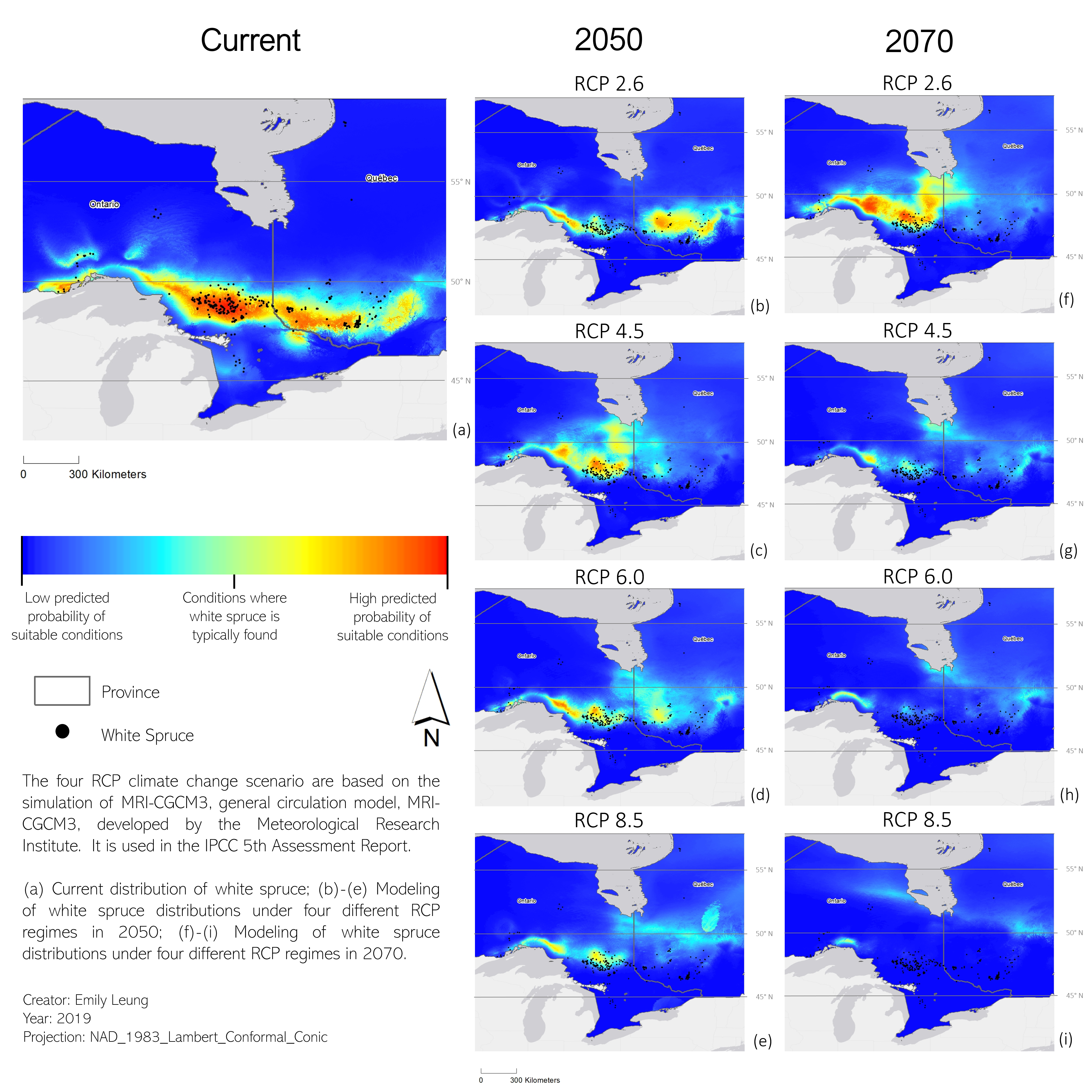Final Project
Link to my final project. https://emilyleung1997.wixsite.com/geob479
Changing climate has significant implications on the distribution and abundance of species, as well as the structure and functioning of ecosystems. Boreal forests in Canada are among the most vulnerable biomes to climate change as temperature increase is projected to be higher than the rest of the continent. Studies have shown that boreal tree species had to migrate hundreds of kilometres northwards to acclimate. However, due to the lack of mobility, the rate of climate change will likely outpace the speed trees can advance, resulting in extensive tree habitat loss.
The aim of this research is to examine the changes in the species distribution of a widely distributed boreal tree species, white spruce (Picea Glauca) in the Ontario-Quebec bottleneck region under different climate conditions. A species distribution model, Maximum Entropy models (MaEent), was used to predict the shift of suitable climate condition for white spruce under four Representative Concentration Pathways (RCPs), namely RCP 2.6, 4.5, 6.0 and 8.5 for the year of 2050 and 2070 based on 8 bioclimate variables. Four main observations were made from the climate projections as shown in Figure 1: (1) a slight increase in suitable habitats under a small temperature rise, (2) a reduction in suitable habitats in the long run, (3) northward advancement of suitable climate conditions, and (4) the retainment of habitat around Lake Superior.

Figure 1: Species distribution modelling under changing climate conditions.